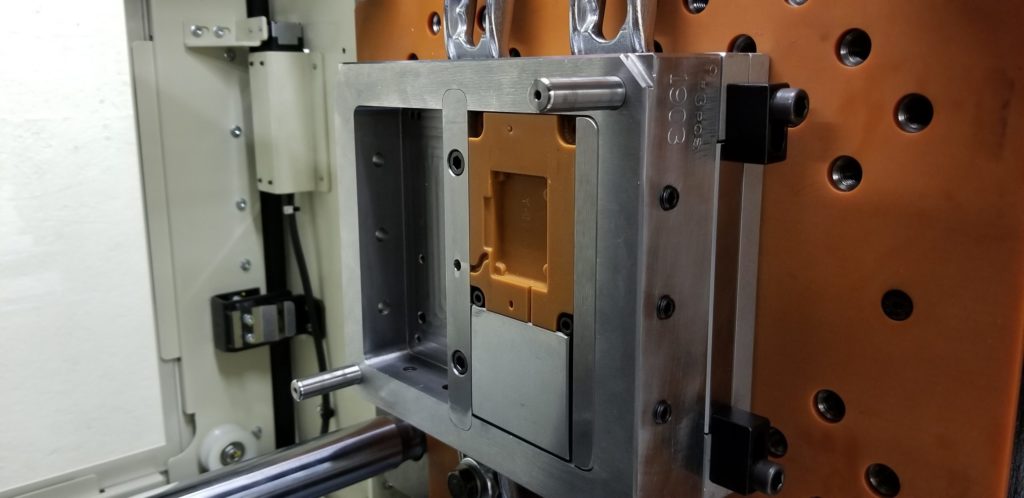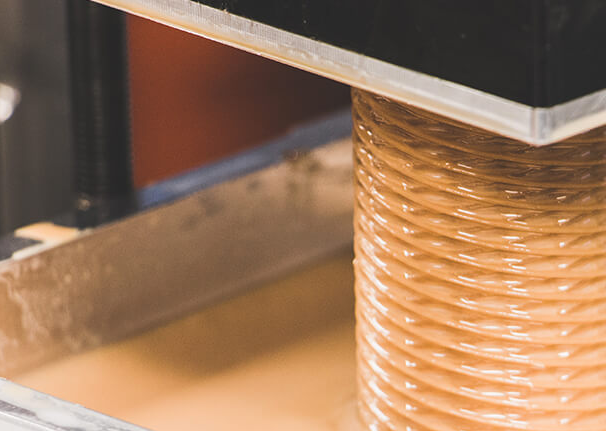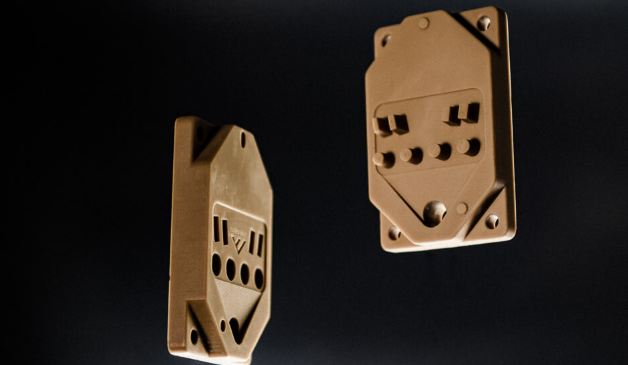Sustainable 3D printed footbridge to be built in Rotterdam using DSM thermoplastics
Fortify’s new CKM technology promises in-situ photopolymer reinforcement
Fortify Expands Composites 3D Printing with Continuous Kinetic Mixing System
Fortify is one of a number of startups that are developing unique technologies for 3D printing composites. While we await the commercial release of the company’s digital light processing (DLP) system for 3D printing composite materials, Fortify has released more information about when that release is to come, along with news of a new product, its Continuous Kinetic Mixing (CKM) system.
Fortify’s Fluxprint method upgrades traditional DLP technology through the use of a proprietary magnetic system. As illustrated in the video below, Fluxprint relies on printing with resins loaded with reinforcement material (e.g., fibers, ceramics, metals) that have been coated in a magnetic material. During the printing process, a magnet within Fortify’s printer orients these materials in an optimized manner depending on the application. By combining the embedded additives with the proper orientation, the technology can improve strength, stiffness, toughness, wear, and heat deflection temperature, and electrical properties
The CKM system is a material mixing module that ensures that the additives within loaded photopolymers are uniformly distributed while preventing sedimentation and aggregation. While this module will be unique to Fortify’s 3D printers, this sort of technology may be crucial to any sort of vat photopolymerization 3D printer that uses loaded resins. We’ve covered stories about a variety of photopolymers with specialty additives. Perhaps a similar mixing process could facilitate their printing and increase the adoption of such materials.
With the CKM announcement, Fortify has also stated that it is expanding its printing and manufacturing capacity with the goal of shipping its first printers to select customers this summer. Up until now, the company has been printing parts for customers, specifically for the production of tooling for injection molding applications.
Through the use of proprietary ceramic reinforcement materials, Fortify has been able to print molds with complex geometries and enhanced physical properties for plastic injection molding. The company has since expanded this capability to metal injection molding (MIM), blending ceramic fibers with resin to create parts that can weather the extreme heat and pressure of MIM.
Chris Aiello, Technical Sales Manager at Alpha Precision Group, said of this new capability, “For years our customers have been asking us for a better way to prototype parts with our production metal injection molding process. Speed, dimensional accuracy, and production intent processes are critical for our customer’s development efforts. Fortify finally showed us a tooling solution that holds up to our MIM process, and checks all the boxes for our customers requirements.”
It’s interesting to note that Fortify is framing the CKM system as a module, as is the case for its Flexprint “fiber alignment module”. We’ll have to see how the modularity of Fortif’s products affects the company’s business and technological strategy. This could mean the need to purchase or lease specific modules separately from the printer itself. Or it could mean that Foritfy plans to release a number of interesting modules over time that may be swapped or included into a broad portfolio of printing systems intended by the startup.
The concept of modularity for tech products is a potentially exciting one, as it makes it possible to upgrade hardware more easily, without completely replacing or overhauling the entire machine. When it comes to consumer goods, modularity has been struggling. Google shelved its modular smartphone and Nascent Objects was acquired by Facebook before we could see if its modular electronics would get off the ground.
For industrial products and individual subcomponents, hardware modules may be easier to pull-off. Swappable printheads, for instance, are common. We’re still awaiting some of the hardware modules related to quality assurance and automation alluded to by Origin when it first unveiled its programmable photopolymerization process. Carbon also said that it would be developing modular hardware to interface with Carbon Connectors built into its equipment. When and if modular hardware becomes a thing has yet to be seen, but if it does, it could have an important impact on the disposability/obsolescence mindset currently exhibited by tech companies.
The post Fortify Expands Composites 3D Printing with Continuous Kinetic Mixing System appeared first on 3DPrint.com | The Voice of 3D Printing / Additive Manufacturing.
State of the Art: Carbon Fiber 3D Printing, Part Five
In the first part of our series on carbon fiber 3D printing, we discussed how the material is used in the larger world of manufacturing. As we’ve learned throughout this series, carbon fiber (along with other reinforcement materials) is typically used as a low-cost alternative to metal, given its high strength-to-weight ratio. Though the material is found most frequently in the aerospace industry, it is increasingly used in other sectors, such as automotive, sports and construction.
What’s we’ve focused on a bit less in this report so far is how it has been and will be used in 3D printing.
The Benefits of 3D Printing + Carbon Fiber
All of the additive technologies we’ve explored have their unique benefits and drawbacks, with some processes more limited in geometric complexity and others unable to deliver the same strength and stiffness as the rest. However, the advantage that they all have in common is a high degree of automation.
Traditionally, applying carbon fiber reinforcement is a manual and time-consuming process, which can be expensive in terms of labor hours. When it’s performed using industrial automation technology, as found in large aerospace facilities, it is extremely expensive. The highest of high-end automated fiber placement (AFP) machines can cost millions of dollars.
In contrast, 3D printing is a relatively automatic process. Once a CAD model has been finalized and is appropriately set up for fabrication by a given 3D printer, the additive manufacturing (AM) system itself will do most of the work (except for post-processing, loading up materials, configuring the printer, etc.).
With some desktop continuous carbon fiber 3D printers from Markforged, Desktop Metal and Anisoprint priced between $4,000 and $20,000, small businesses and workshops can have access to an automated method for producing carbon fiber-reinforced parts. For much larger firms, emerging systems, like those from Impossible Objects and Arevo, could make batch production much possible. And in either case, the technology will likely be less expensive than AFP.
Applications
Markforged has been on the market the longest and, therefore, has the most case studies demonstrating the range of uses for continuous carbon fiber 3D printing. That has also given it plenty of time to find use cases running the gamut from prototyping and tooling to end part manufacturing.
For example, Brooks, a publicly-traded automation equipment manufacturer, uses 3D printing to prototype end effectors meant to handle fragile goods like products like semiconductor wafers. The company claimed that its previous 3D printer was not capable of printing robust prototypes, but that carbon-fiber-reinforced designs were thin enough and stiff enough for the application.

A 3D-printed lifting tool, made using Markforged carbon fiber 3D printing. Can lift 960 kg. Image courtesy of Markfoged.
Tooling is a popular application for many Markforged customers, given the strength and durability of reinforced polymer parts. These can vary, including small jigs and fixtures to “the world’s first 3D-printed CE-Certified lifting tool”.
Using the X7 3D printer, Wärtsilä 3D printed a lifting tool for moving heavy ship engine parts, such as pistons. The marine and energy firm believed its typical steel machining process to be too expensive and opted for 3D printing a polymer lifting tool reinforced with carbon fiber. The resulting part was 75 percent lighter while capable of lifting 960kg. Wärtsilä believes that it saved €100,000 in tooling alone by printing the part.
In another case, a Canadian energy services company used Kevlar, high-strength, high-temperature fiberglass, and carbon fiber to reinforce tooling on its manufacturing equipment. Using Markforged’s lowest-cost option, the Mark Two, the firm printed 53 different parts for its pad handling machine, such as fuse covers, motor mounts, end effector laser mounts and more. The company estimated a total of CAD$27,000 in savings.
The Boston-based startup has also seen its technology deployed for production of end parts. Haddington Dynamics is an engineering startup that uses 3D printing to manufacture parts for a 7-axis robotic arm for such customers as NASA, GoogleX and Toshiba. 3D printing allowed the company to reduce part count on the design from 800 to under 70, including custom swappable 3D printed gripper fingers. To produce parts that are more robust, Haddington reinforces a chopped carbon fiber-filled nylon with continuous carbon fiber.
Though still newer to the market, Arevo has also been making a name for itself in mass production. The Silicon Valley firm is partnering with Franco Bicycles to 3D print continuous carbon fiber single-piece unibody frames for a new line of e-Bikes.
Fortify has devoted an entire business line to a very interesting application for its magnetic approach to composites. The startup has a service for the additive fabrication of tooling for the injection molding industry, though Fortify is relying on a proprietary ceramic material for this application. The material is durable enough that mold could last hundreds to thousands of shots, according to the company. Yet, unlike traditional molds, these parts are delivered in just three days and can be much more geometrically complex.
Other firms are a bit too young to go public with how their early customers are using their technologies, but demonstrator parts have been showcased. Desktop Metal, for instance, displays a variety of tooling, jigs and fixtures on its Fiber-dedicated page. Anisoprint has just three case studies up, but one is a research project that demonstrates the firm’s unique approach to reinforcing only the areas of a part that require added strength, reducing the weight of the part even further than traditional composites or other carbon fiber 3D printing approaches have executed.
As the technology begins to make its way into the marketplace, we will definitely see more applications of carbon fiber 3D printing. One area where it should continue to have a big impact is through the production of tooling and, a bit further along in the technology’s development, end parts. In the next part in our series, we’ll take a look at large-scale carbon fiber 3D printing.
The post State of the Art: Carbon Fiber 3D Printing, Part Five appeared first on 3DPrint.com | The Voice of 3D Printing / Additive Manufacturing.
Fortify and Henkel collaborate to develop 3D printing for injection molding
Interview with Josh Martin the CEO of Fortify on Fiber Reinforced DLP
We’re so used to 3D printing being disruptive that we don’t, in my opinion, worry enough about being disrupted ourselves. Much 3D printing news is a seemingly endless me-too copycat conga line so we need to recognize when someone is doing something original. Fortify is doing something original, something original that is potentially disruptive to the 3D printing industry. The company has come out of obscurity to raise over $13 million for an integrated 3D printing solution for fiber-reinforced parts. Fortify is making strong DLP parts and can even align the fibers in these parts. Through correct fiber alignment inside a part, Fortify could potentially create properties that others could not match. Novel fibers could be used to make parts weakly magnetic but only in certain sections for example. Also tougher, stiffer and more durable DLP resin parts may take a traditionally smooth and detailed technology into new applications. Through better microstructural control the company could outperform other players by a significant margin. Boeing was already trying to put SLA parts on aircraft in the mid-nineties, will Fortify make that a reality? Or will light-cured resins always be brittle with low CSTs no matter how many fibers you put in them? Will their technology find broad adoption? Fortify has the potential to be truly disruptive if they through business development find, conquer and commercialize completely new parts and applications in spaces where their technology wins. Or the company could keep on seeking adoption and find only skepticism for a firm going its own way. Either way the company is going to have a very exciting number of years ahead of it. We interviewed Fortify CEO Josh Martin to find out more.

How did Fortify get started?
Fortify spun out of my research at Northeastern University. I completed my P.hD. under Professor Randall Erb at the DAPS (Directed Assembly of Particles and Suspensions) lab focusing on printing advanced composites. Throughout that process, I linked up with a few other engineers (Scott Goodrich, Andrew Caunter, and Dan Shores) at NEU and we decided to commercialize the technology. Around the same time, Karlo Delos Reyes (one of Fortify’s Co-Founders) brought funding to the University for graduate students to turn their research and technology into a company (what is now called the Origin Program). We were lucky that the additive manufacturing space was gaining acknowledgement and needed new materials to continue serving a variety of industries. All of these pieces came together and propelled us to join MassChallenge (the largest accelerator for startups) where we were the 2016 Gold Winner. Since 2016, we’ve closed two rounds of Venture Capital financing, totaling $13M.
What is it that you do?
Fortify is creating engineering solutions by leveraging fiber reinforced additive manufacturing. We are commercializing DCM (Digital Composite Manufacturing), a platform that combines software, hardware, and materials for a fully integrated additive solution that will replace many bulk machined parts and enable new levels of performance through 3D printing.
How does it work?
The Digital Composite Manufacturing platform leverages traditional digital light projection technology to print accurate parts with high resolution. Our hardware system leverages new types of processing to print filled UV curable resins. Particle alignment and process control is driven by our software, which can utilize finite element analysis to optimize the end product.

How do you optimize for microstructural control?
Control over the microstructure is driven by our electromagnetic alignment technology – fluxprint. Optimization is reached by simulation based techniques, which allow us to use boundary conditions on a part to predict a best-case alignment protocol.
How do you align the fibers?
Our electromagnetic alignment technology – fluxprint – allows for control over the orientation of our reinforcing additives. Part of our unique value add is the ability to tailor the response of a number of different reinforcing materials.
So these are short fibers?
In most cases, yes. Using aligned short fibers allows us to strike a unique balance of mechanical performance and processability.
Does this mean that you can also do magnetic parts?
Yes, this would be quite easy for us to accomplish. It’s worth mentioning that we currently tailor our materials so that the end-part has no bulk magnetic response.

How do your parts compare with traditional composites?
Traditional continuous fiber composites involve many labor intensive processes to achieve very high levels of performance. Applications that require large structural components (such as wind turbines and airplanes) will continue to leverage the traditional composite supply chain. However, for smaller and more complex parts, the cost to manufacture traditional composites often outweighs the performance benefit. Fortify is excited to bring our materials into these types of applications. Short fiber-filled engineering materials, such as glass-filled Ultem or PEEK, can be processed into more complex parts while providing valuable performance gains. However, these materials still present challenges that require machining operations and impose design constraints. Fortify is targeting a material performance-processability space that will directly compete with short-fiber filled engineering resins, and bridge the gap between filled engineering polymers and traditional composites.
Which materials can you do?
We are currently focusing our development on a number of ceramic reinforcements. We combine this with engineering thermosets from well known industrial suppliers like Henkel, DSM, and BASF.
Aren’t these DLP materials too brittle?
Thermoset materials used in DLP technologies have made tremendous progress towards improved toughness. Fortify is excited to improve performance measured by fracture and impact toughness using our alignment technology.
Can you produce parts with a lot of cross-sectional area?
Yes, Fortify is not limited to printing latticed parts. Most of our injection mold tools are printed with a fully dense cross-section.

Is it problematic that composites are difficult to recycle?
It has been a focus of the industry for a while now. There are new recyclable thermoset systems coming to the market, but the performance keeps them from competing with the incumbent supply chain. Fortify is keeping an eye on this space, because we believe our additive technology could be used to bridge the gap, enabling fiber reinforced recyclable systems that can compete on a performance basis with traditional materials.
What are some of the emerging applications?
Our beachhead application at the moment is injection mold tooling. This is an application sought after by the 3DP space for a few decades. The relatively low adoption barrier makes it a great entrance into the market to allow us to prove our technology as we develop for production parts. Fortify is excited to develop towards applications that need better performance at temperature, such as electrical connectors, as well as other industries that require precision parts with wear resistance, such as gears and electromechanical components.
Will you sell machines, be a service?
We are looking to provide hardware systems and consumables to OEM’s and contract manufacturers.
Who are you interested in partnering with?
We are actively seeking beta program partners. The perfect partner would be an organization that isn’t completely new to additive, so has some familiar background, and has an exciting application that fits the small, complex geometry, high mechanical application space. This is an exciting time to join the Fortify network as we continue to prove our technology for EUP and streamline production and manufacturing for composites in real world applications.
What advice do you have for a company new to 3D printing that wants to use it for manufacturing?
Get the right decision makers involved from the beginning when identifying areas of the business that would benefit from the use of additive. Each use case likely has a bias towards a particular technology. Once that technology is identified, it will take dedicated resources to validate and exercise the use case.
The post Interview with Josh Martin the CEO of Fortify on Fiber Reinforced DLP appeared first on 3DPrint.com | The Voice of 3D Printing / Additive Manufacturing.
3DPOD Episode 16: 3D Printing Trends for 2020, with Xometry’s Greg Paulsen
Today Xometry’s Greg Paulsen is back and we geek out some more on 3D printing. We look at some anticipated trends in 3D printing for the next few years this time. Software is an integral part of the 3D printing experience and of getting the right parts made. Will we see more monitoring and control software in 3D printing? What new processes are we excited about? Are there new technologies coming to market at all? Which of these technologies excite us? What will the hurdles be and will they find adoption? Are there any materials that will make us all happy? Give the podcast a listen and tell us what you think! 6
The post 3DPOD Episode 16: 3D Printing Trends for 2020, with Xometry’s Greg Paulsen appeared first on 3DPrint.com | The Voice of 3D Printing / Additive Manufacturing.
Fortify Closes $10M Series A Funding Led by Accel
Fortify, known for their next-generation composites and Digital Composite Technology (DCM), has just completed a $10M Series A funding led by Accel. The Boston-headquartered additive manufacturing startup also received funding from Neotribe, Prelude Ventures, and Mainspring Capital Partners. Following a previous seed round this year also, yielding $2.5M, this latest funding will support the Fortify’s Discovery Partner Program and further growth of the Fortify team as they continue to create technology to be used in applications like aerospace, manufacturing, and automotive—with end-use parts in electrical connectors, impellers, mixers, and specialty drones.
 Fortify is known for their use of magnetics (Fluxprint technology) and digital light processing 3D printing, allowing them to fabricate parts made with composites, therefore imbued with high-performance mechanical properties. Composite research was performed at Northeastern University by Dr. Randall Erb and Dr. Joshua Martin. The company has already seen huge growth this year, with its staff doubling, and new office space required for its overall expansion.
Fortify is known for their use of magnetics (Fluxprint technology) and digital light processing 3D printing, allowing them to fabricate parts made with composites, therefore imbued with high-performance mechanical properties. Composite research was performed at Northeastern University by Dr. Randall Erb and Dr. Joshua Martin. The company has already seen huge growth this year, with its staff doubling, and new office space required for its overall expansion.
“Now more than ever before, it’s vital that the U.S. economy has a strong manufacturing ecosystem,” said Eric Wolford, venture partner at Accel. “Fortify is uniquely positioned to help lead the resurgence of American manufacturing by using tech to produce best-in-class parts for the digital age. We’re thrilled to support the entire Fortify team as they continue to set a new standard in manufacturing.”
The Discovery Partner Program gives a select number of Fortify customers earlier access to DCM. Currently, Fortify has noted ‘dramatic improvements’ for users 3D printing with the DCM platform. Fortify says that users also report up 10-100x in improvements, when comparing to 3D prints of other types. Molds are being supplied for customers right now, with beta machines going out in early 2020. Their new Fortify Fiber Platform has just been rolled out also, as the company continues to work with companies like DSM and BASF.
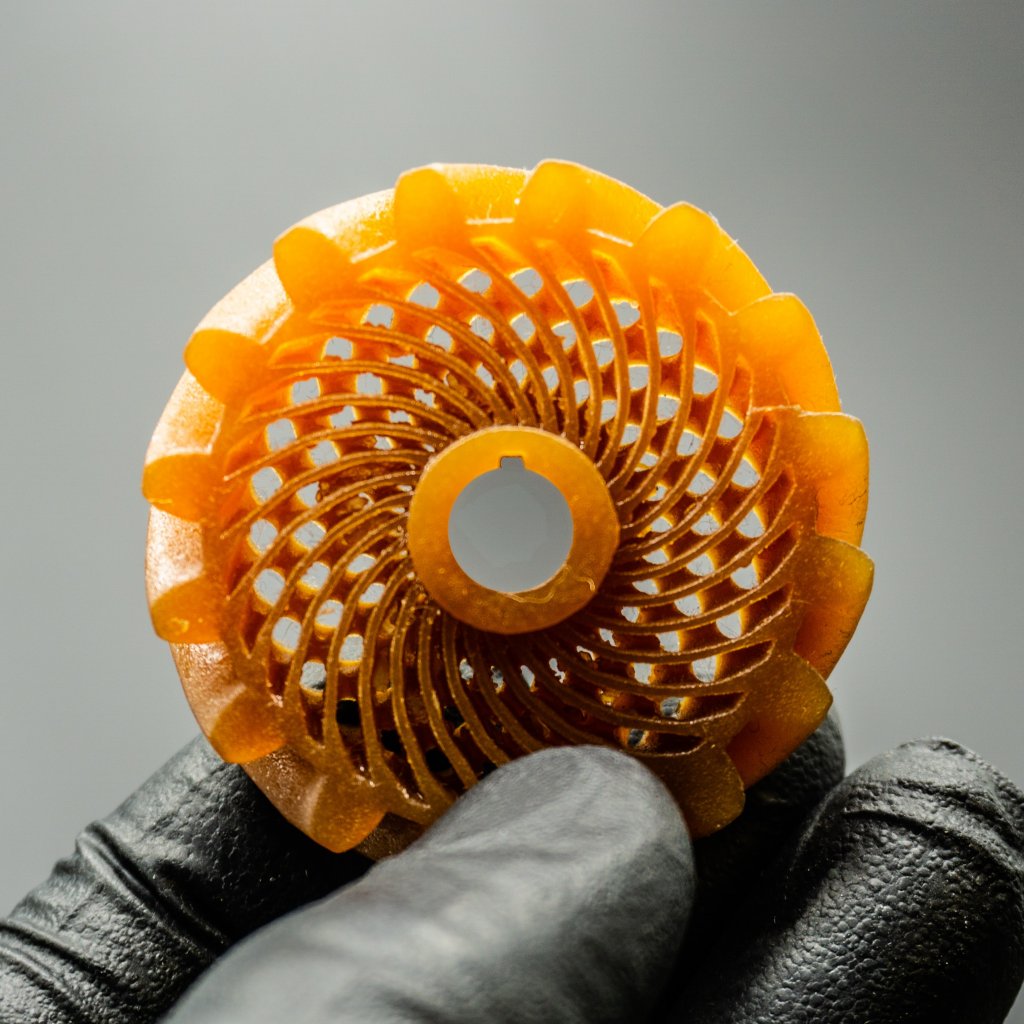
“Material properties are the dominant factor driving adoption of Additive Manufacturing across industries,” said Ben Arnold, Fortify VP of Business Development. “Our open materials platform leverages the world’s leading polymer chemists as they continually innovate. We reinforce these base resin with fiber as we print to gain significantly higher levels of performance. It’s quite exciting that even in this early stage of the company, we have customers buying parts for use in production applications.”
“We’ve achieved so much since our founding, and we’re eager to expand on our platform capabilities,” said Josh Martin, CEO and founder of Fortify. “With the support of our investors, we will focus on innovation, bring our technology to new partners, and grow our product offerings.”
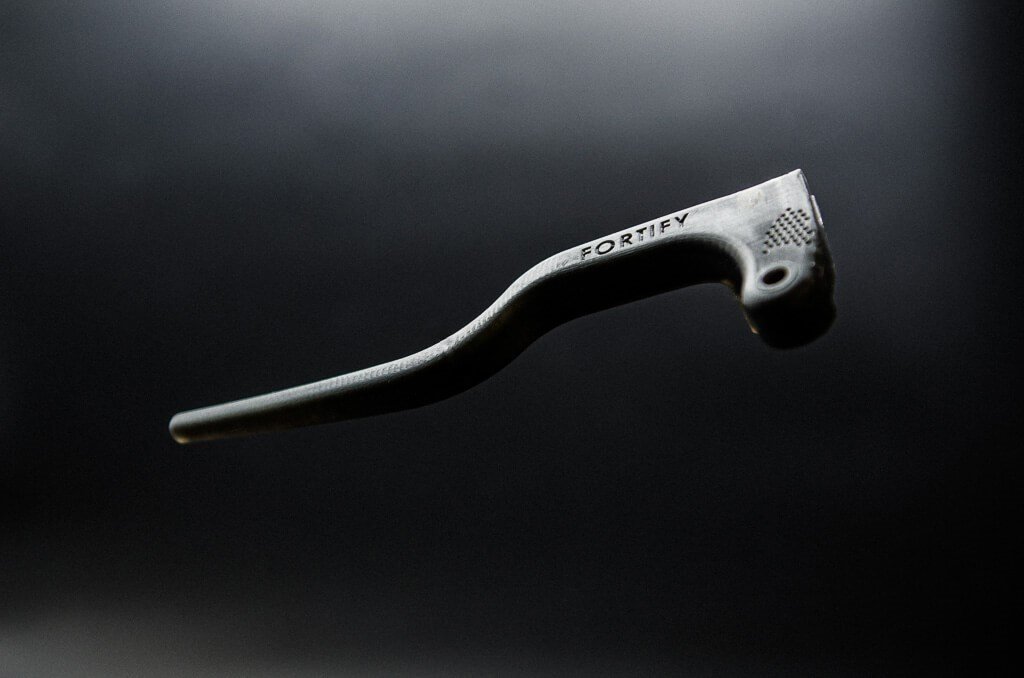
Notable new hires include industry veteran Ben Arnold as VP Business Development, most recently of Desktop Metal and Dave Colucci, formerly of Soft Robotics, as their new Embedded Systems Lead Engineer.
Researchers around the world are involved in the realm of 3D printing materials, from biomaterials to self-healing capsules, and even soft materials for robotics. What do you think of this news? Let us know your thoughts! Join the discussion of this and other 3D printing topics at 3DPrintBoard.com.
[Source / Images: Fortify]
The post Fortify Closes $10M Series A Funding Led by Accel appeared first on 3DPrint.com | The Voice of 3D Printing / Additive Manufacturing.

